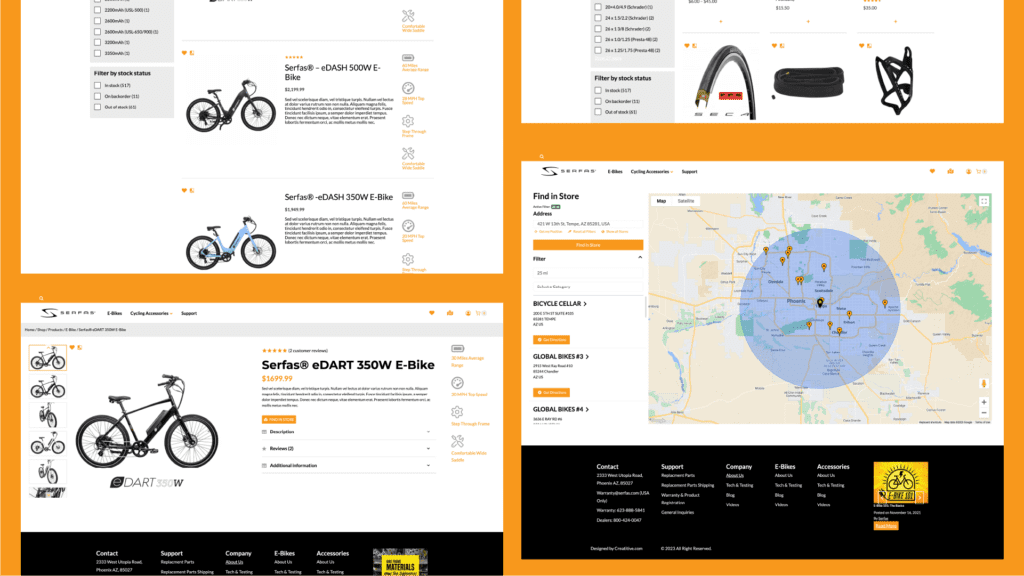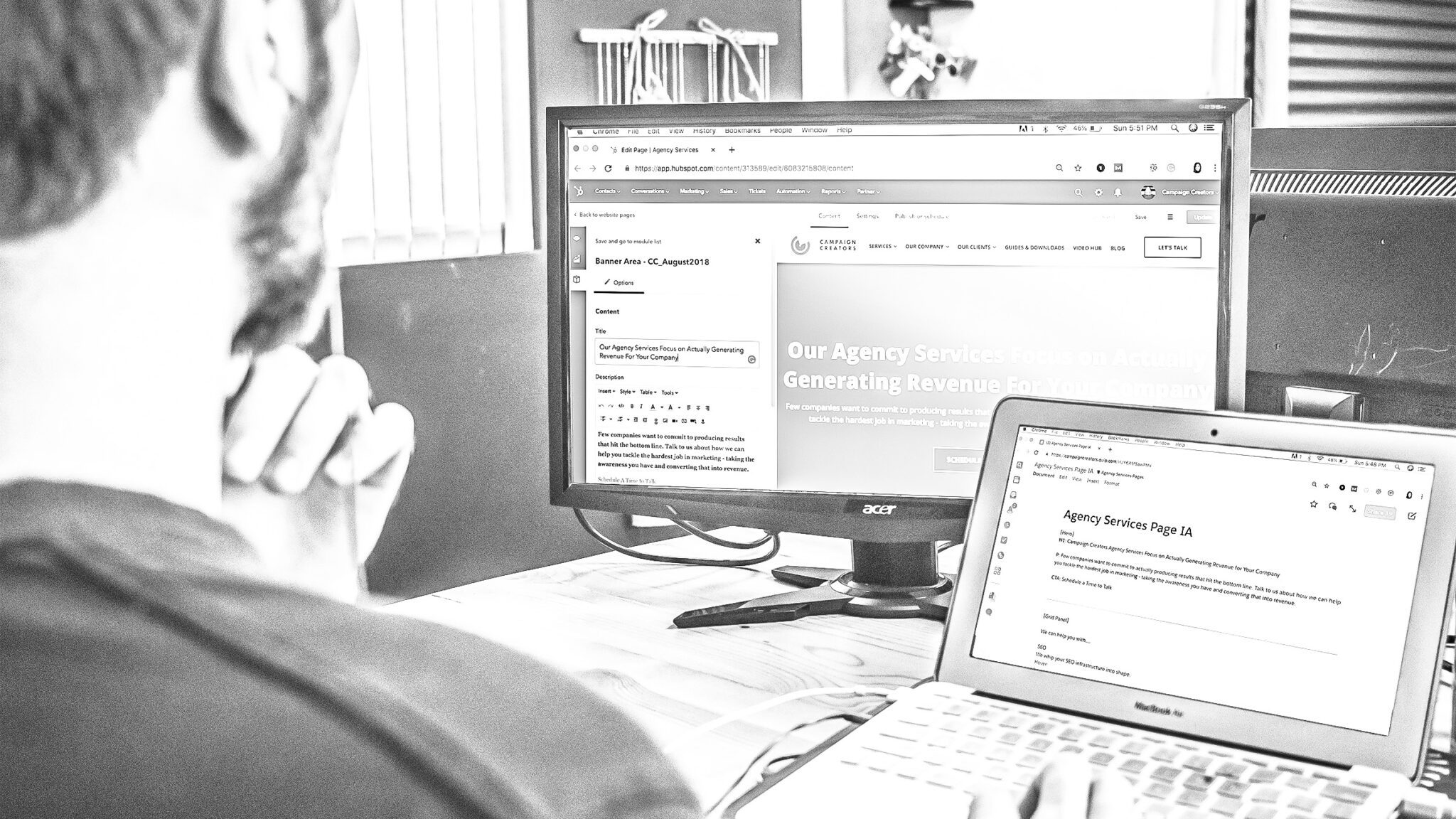One of the most common mistakes every gym and fitness brand makes is the miscalculation of their investment in their marketing strategies. The productivity and growth of every brand are directly related to the investment decisions they decide to make in every aspect of their business and how those resources are used.
How is it that ROI helps business owners better understand their finances, and what benefits will they get by paying attention to them through ROI? We are here to explain how return on investment can help your finances make the most out of them with the desired results and goals you are looking for.
When ROI and Gym Website Marketing Meet
ROI is a tool that has helped as a guiding compass to different gym brands and fitness centers in the market, steering marketing endeavors towards efficiency and effectiveness. Understanding the ROI of website marketing initiatives is paramount for gyms aiming to amplify their digital footprint. It measures campaigns’ success and provides invaluable insights into which strategies yield the most significant impact. By analyzing ROI metrics, gym owners and marketers understand where to allocate resources, fine-tune processes, and optimize their online presence.
Besides the aspects we have mentioned above, there are other benefits your website will perceive by correctly applying and understanding ROI in your website marketing strategy, such as the following:
- Performance Measurement: Only some marketing strategies will have the same effect and impact on your website. But with ROI, it will become easier for you to have a clear-cut assessment of the effectiveness of your different website marketing campaigns. It enables the quantification of returns against the investment made, offering precise insights into what strategies generate the most significant impact.
- Strategic Decision Making: By having a better understanding of the impact and the insights of your marketing strategies, it will be easier for gym owners to identify and determine which online channels and website content are most effective, allowing websites to prepare their content in a way that results in more appealing and attractive for their audiences.
- Improved Campaign Adjustments: With an accurate ROI analysis, facilitating swift optimizations and adjustments to your web content is possible. If some strategies do not have the expected impact, gyms can quickly modify or pivot their campaigns to improve their effectiveness.
- Competitive Edge: We needed to include improving the website’s competitive edge. By leveraging ROI insights, gym owners can gain a competitive advantage. ROI is an effective and robust tool that helps businesses to adapt faster to market changes and trends, innovate their marketing approaches, and stay one step ahead of the rest of the competition.
These are just a few advantages your website will perceive by measuring ROI for your marketing efforts. However, for your ROI implementation to be successful, it is crucial to have clear objectives for implementing ROI. Let’s delve deeper into it.


Web Strategy
ROI for fitness businesses is important. Contact Us to start your strategy today!
Gym Stages & Setting Clear Objectives
Whichever your objectives are by measuring ROI for your gym website marketing campaign, one thing is sure: setting realistic and measurable goals is indispensable for it to be successful. By aligning your business objectives with tangible ROI metrics, it will be easier to establish a clear focus point and approachable goals toward achieving your desired outcomes.
There are different stages every gym has to go through while measuring ROI and leveraging their gym website marketing strategy. We are going to dig deeper into the different gym stages:
- Startup: This stage mainly considers the principal and fundamental aspects every new gym should count on, from acquiring the necessary funds to start the business and managing operating costs to generating a strategy to attract the initial customer base.
- Early Growth: When you already have the basic needs of the startup, your business will now be in early growth. Because your gym will experience community growth and facility expansion, it is time to focus on providing your members with an excellent client service experience, expanding the range of products and services your gym offers, and maintaining a satisfaction sensation among your customers.
- Established Growth: This is when you must consider improving your business weaknesses and challenge yourself to maintain the quality of the equipment and the efficiency of your group classes to keep every workspace of your fitness center clean and sanitized.
- Expansion: Congratulations! Your business is starting to grow like crazy. By this stage, you can start thinking about opening new locations in strategic places. It is also that moment to hire fresh talent for your gym establishment and provide training for them to learn the basics. But be careful; managing expansion costs can be a challenge.
- Maturity: Last but not least, we have the maturity stage of your business. Think about it as staying competitive in the fitness industry; now is the time to overstage your competitors and keep your gym at the top of the pyramid.
Setting goals that you can measure and achieve is like having a roadmap for your business success, especially when tied to Return on Investment (ROI). It’s like having a measuring tape for progress!
When your goals are measurable, you can track how your marketing efforts pay off in absolute numbers. But it’s not just about numbers; it’s also about being practical.
Realistic goals connected to ROI keep your expectations in check. They prevent setting too high or unrealistic targets, ensuring your plans are doable and won’t overwhelm your resources or discourage you.
With these goals, you steer your business in the right direction and ensure every step counts towards your success story.
What are some gym owners’ most common objectives when measuring and implementing ROI in their website marketing campaigns? Here’s a list of the most common goals:
- Increase Membership: One of the most common objectives when leveraging ROI is to boost membership. They aim to use their marketing investments effectively to attract new members and retain existing ones, ultimately growing their customer base.
- Enhance Brand Visibility: Improving brand recognition and visibility is vital to leveraging ROI. Most gym owners aim to properly invest in marketing efforts that increase their brand presence and make their gym a go-to choice among fitness enthusiasts.
- Differentiate From Competitors: With the many options and possibilities gym-goers have nowadays, gyms and fitness centers need an extra factor that makes them stand out from the market. Gym owners aim to use ROI-driven strategies to highlight their unique selling points.
Besides measuring ROI, it is vital to understand your website content’s key performance indicators to brand your gym website effectively. How can we identify the KPIs of our website and ROI? Let us show you how to do it.
Key Performance Indicators
As the name of the heading suggests, the key performance indicators play an essential role in every website marketing development process and strategy. Many KPIs are crucial for measuring website and online platform performance in the digital domain.
An example of this can be measuring the traffic of your website. The website traffic of your gym reflects the volume of visitors and the level of engagement, offering insights into the website’s visibility and appeal.
Likewise, we can find examples like conversation rates, class bookings, or purchases, as these indicate the level of effectiveness of the website in converting visitors into customers. Additionally, tracking engagement metrics such as time spent on site, bounce rates, and page views per session provides a comprehensive understanding of user interaction and content relevance.
Just like we explained with ROI, aligning your Key Performance Indicators with your marketing objectives is an asset that will make your life and marketing process way more manageable. Think about it like connecting the dots between the measurable metrics and what you aim to achieve, leading to significant metrics success.
This alignment ensures that every marketing effort is focused on achieving those tangible results you’ve set out to accomplish.
It’s not just about having lofty aspirations; it’s about having a clear path with markers that guide and validate your progress, allowing for informed decisions and strategic adjustments.
Along with what we have seen and explained so far during this piece, there is another fundamental aspect we need to talk about: A/B Optimization and Testing.
A/B Optimization and Testing
You may wonder what we mean when discussing A/B optimization and testing. We can refer to it as a secret weapon many digital marketers use, a methodology that focuses on experimentation and optimization.
A/B optimization compares two versions (A and B) of a web page, ad, email, and any marketing element with one variable changed to determine which version performs better in achieving a specific goal.
Presenting different versions to similar audiences aims to help gym owners identify which variant resonates better with the audience. It’s a way of refining and honing your marketing approach based on data-driven insights rather than gut feelings.
Whether testing different headlines, visuals, call-to-action buttons, or layouts, A/B testing empowers marketers to make informed decisions, enhance user experience, and continually optimize their strategies for better results.
Contrary to what you might believe, implementing A/B testing to optimize your website is a task that can be achieved if you follow the proper system approach. Here is a small guidance on how you can start your A/B testing:
- Identify Your Goal: Define a clear objective for your A/B test. Whether it’s increasing click-through rates, improving conversions on a sign-up form, or enhancing engagement, pinpoint the specific element you aim to optimize.
- Select the Elements You Want to Test: Choose the webpage element you want to experiment with—headlines, call-to-action buttons, images, layout variations, or entire content sections.
- Create Variations: Develop alternate versions (A and B) of the chosen element. Ensure they differ in only one variable to identify the change’s impact accurately. For instance, if testing a call-to-action button, one version might have a different color or text.
- Set up Testing Tools: Utilize A/B testing tools like Google Optimize, Optimizely, or other website testing platforms to implement the variations on your site. These tools often have user-friendly interfaces that facilitate setting up experiments without coding.
- Divide Your Audience: Randomly split your website traffic between the control (A) and variant (B) groups. Ensure each group represents a statistically significant sample size to generate reliable results.
Applying these steps to your A/B testing strategy will make running the experiment easier and help you identify and analyze the information you want to know about.
Common ROI Challenges
Even though Measuring ROI is an effective way to optimize your website marketing strategy, we need to highlight that there can be some challenges during your ROI process. Some variables and aspects to take into consideration are the following:
- Long-Term Impact Assessment: Measuring the long-term impact of specific marketing initiatives poses a challenge. Some strategies yield little returns but could significantly contribute to brand building or customer loyalty over time, making their ROI evaluation challenging.
- Variable Timeframes: Different marketing strategies have varying timeframes for ROI realization. Some tactics yield immediate returns, while others might take weeks, months, or years to demonstrate their full impact, making uniform assessment challenging.
- Ever-Changing Metrics: Determining the right metrics to track ROI becomes challenging with the evolution of marketing channels and technologies. Shifting consumer behaviors and new platforms necessitate adaptability in measuring the most relevant metrics for ROI assessment.
It is possible to address these challenges with a practical approach by incorporating advanced analytic tools and clear data strategies; surfing these issues will be easier, and as an extra, you will get more precise information about your ROI metrics and procedures.


Zach Colman – Book a Speaker
The mastermind behind Creatitive, a GRIT-focused branding powerhouse. His journey is studded with the successful rebranding of numerous high-profile athletes and dynamic athletic-driven corporations. With the help of his team, these brands have cultivated robust communities and distinctive mindsets.
Communication and Considerations
Because ROI is a process that requires consistency, communication is crucial for your ROI strategy to succeed. Regular reporting is a vital communication bridge, offering insights into the progress, challenges, and successes of ongoing initiatives.
Keeping stakeholders informed about key metrics, milestones, and outcomes enables informed decision-making, fosters trust and ensures everyone works towards shared goals.
Moreover, having trustable and fluent communication will make identifying possible issues and improvement opportunities easier, facilitating agile responses and course corrections when necessary. Likewise, it will help you and your team members to align quickly with the continuously changing trends.
Trends, whether technological advancements, shifts in consumer behavior, or industry innovations, have a profound effect on how businesses strategize and measure returns on investment.
Embracing and aligning these trends with ROI measurement strategies is crucial for staying relevant and competitive. For instance, emerging digital platforms offer new avenues for reaching audiences, impacting the effectiveness of traditional marketing channels.
Work With Us!
As you can see, Measuring ROI for your gym website marketing strategy has many variants and aspects you must consider. That’s why, if you want to take advantage of it, we invite you to contact us. At Creatitive, we count on an experienced marketing team to guide you through these processes to perceive the best ROI advantages and benefits for your business.
FAQ
Can I Run an ROI Study on My Own?
It is possible to Run an ROI study on your own. However, finding someone outside your organization to help you run the study is advisable. This way, you will have fresh eyes that can help you identify the improvement points of your website marketing strategy.







